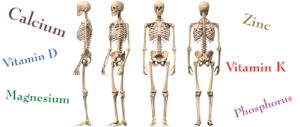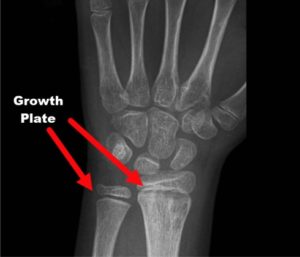This issue of Making a Difference! is brought to you by…
Jim & Joyce Sams
1.916.488.4151
Send Us An Email
Go Shopping
In this issue…
♦ Time to “bone up” on… your bones! ♦ A few facts about bones…
♦ The structure and formation of your bones… ♦ A growth plate primer…
♦ When things go wrong… ♦ Tips to keep your bones healthy…
♦ Calcium controversies? ♦ Bone-healthy supplements…
♦ Introducing… Omega-3 Gellys! ♦ The importance of DHA and EPA…
 “Cartilage, you know, is that flexible substance found in the joints. It is the material from which bones are produced.
“Cartilage, you know, is that flexible substance found in the joints. It is the material from which bones are produced.
[While] it’s true a mineral deficiency does cause a great deal of disturbance… a healthy bone structure is also dependent upon other factors.
Chief among these is Vitamin C [for] the formation of collagen…”
~ Dr. Forrest C. Shaklee, Sr.
Time to “bone up” on… your bones!
Your skeleton… without it, you’d be just a puddle on the floor. Imagine that! Your bones provide structure to your body, facilitate movement via lever mechanisms, protect your internal organs, and act as an environment for mineral and cellular production. While as an adult, your body is made up of 206 to 213 bones, as a child you started life with over 270 bones. No,,, they didn’t just vanish! (See next article.) 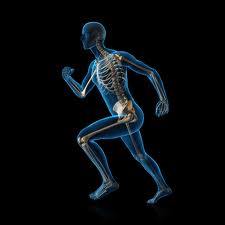
The importance of bone health can’t be understated. Having a general understanding of bone anatomy, structure, and mechanics will ultimately allow you to better understand your body and help you adopt a healthy lifestyle for longevity.
Health care practitioners and scientists aren’t the only ones who can benefit from the knowledge of our bones and anatomy. Whether you’re a health & fitness enthusiast, nutritionist, health teacher, medical care worker, someone living with a chronic illness, or simply a person living either an active or a sedentary lifestyle, an understanding of the musculoskeletal system can benefit you in myriad ways.
A few facts about bones…
⇒⇒ Many of the tiny bones a baby begins life with fuse together to form the larger bones in the skeletal system.
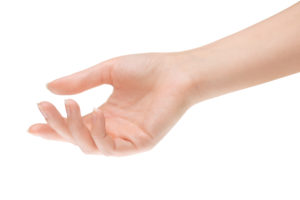 ⇒⇒ More than half of your bones are in your hands (54) and your feet (26).
⇒⇒ More than half of your bones are in your hands (54) and your feet (26).
⇒⇒ Bone is a living tissue. The collagen in bone is constantly replenishing itself, so about every 7 years, you have a brand new skeleton!
⇒⇒ The fracture resistance of bone is increased if the amount of available collagen is sufficient.
⇒⇒ Vitamins A, K and D, calcium, and exercise help maintain bone density for life.
The structure and formation of your bones…
In the womb, and lasting through the early stages of birth, bones begin as… and are formed from… cartilage, and then develop into long, short, flat, and irregular-shaped bones.
As we age, the structure of our bones develops, hardening and calcifying over time until there is little to no cartilage left… a process known as ossification.
There are several types of bone composition:
⇒⇒ Cortical Bone: The hard outer layer that makes up the majority of the bone mass
⇒⇒ Trabecular Bone: The spongy-like, less dense part of the bone
⇒⇒ Bone Marrow: The soft tissue found in the center of the bone. Red bone marrow is 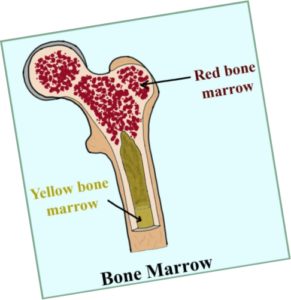 where red blood cells, platelets and white blood cells are created. Yellow bone marrow stores fat and produces red blood cells during life-threatening situations when the body can experience rapid blood loss. In such emergencies, yellow bone marrow essentially transforms into red bone marrow to produce blood cells and keep us alive.
where red blood cells, platelets and white blood cells are created. Yellow bone marrow stores fat and produces red blood cells during life-threatening situations when the body can experience rapid blood loss. In such emergencies, yellow bone marrow essentially transforms into red bone marrow to produce blood cells and keep us alive.
⇒⇒ Blood vessels & nerves
⇒⇒ Endosteum & periosteum: Connective tissue that promotes bone growth & repair
Ossification, or bone formation, is a result of cells known as osteoblasts producing bone tissue which, over time, hardens and calcifies. Through several natural, biological processes, the bone  is able to develop, grow, and maintain its form by transmitting cell fluid through the tiny canals of the bone.
is able to develop, grow, and maintain its form by transmitting cell fluid through the tiny canals of the bone.
During the course of one’s life, bones are constantly being formed and remodeled. With almost instinctual and reactive properties, the human bone has the innate ability to repair itself, become thicker for protection, and rebuild new bone tissue once damaged.
While this is a simplified description of bone formation, it will help you understand another miracle of the human body.
A growth plate primer…
Growth plates, which occur in adolescent bone development, are the cartilage layer found towards the end of long bones. Although the growth plate disappears once the bone reaches maturity, it plays an integral role in the development and formation of adolescent bone growth.
The role of the growth plate is so important, in fact, that the byproduct of injury or damage can result in uneven limbs, stunted growth, chronic pain, and debilitation, so if you suspect your child has an injury, or if your child is having difficulty when participating in sports or activities, seek medical attention immediately.
Common symptoms of growth plate injuries
____ Pain & discomfort
____ Compromised mobility
____ Swelling of the Joint
The most likely causes of a growth plate injury are overuse or as a result of a collision or accident.
The importance of maintaining strong, healthy bones, not only in adolescence but in adulthood, is crucial for your health, well-being, and longevity.
When things go wrong…
While bones form a strong structure on which your physiology is built, things can go wrong.
Fortunately, bones have a remarkable self-healing process:
Immediately after a bone breaks, your body springs into action to repair the damage. 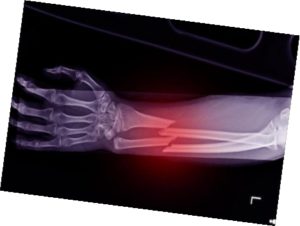
Within an hour or two, a blood clot forms around the break. Special immune cells within the clot called phagocytes, start cleaning bone fragments and killing any germs which might have entered at the break site.
Next, another special group of cells called chondroblasts create a soft callus… made mostly of collagen… around the fracture, a process which takes from 4 to 21 days
Then, starting about 2 weeks after the break, osteoblast cells form a hard callus and create new bone by adding minerals to make it strong.
Finally, the bone is remodeled by special cells called osteoclasts, which break down extra bone around the fracture until it’s completely healed and restored to its original shape. Bone remodeling is a very slow process which can take anywhere from 3 to 9 years to complete!
Tips to keep your bones healthy…
Good news! Maintaining healthy bones is much like building strong muscles. With healthy lifestyle changes, following a clean diet, exercising, eliminating bad habits, and implementing other preventative measures, one can ensure the best chance of optimal bone health.
While some causes of bone deterioration are uncontrollable (i.e., age, race, genetics, chronic conditions like thyroid disease, or taking certain medications), the large majority of cases are caused by poor lifestyle choices.
Here are some tips you can implement today to ensure you have healthy bones:
____ Follow a good diet rich in calcium, protein, and other vitamins and minerals.
____ Ensure adequate vitamin D absorption by spending time in the sun and/or by taking Vita-D3.
____ Exercise regularly and participate in weight-bearing physical activity.
____ Start taking Collagen-9 to support bone health and reduce bone deterioration.
____ Eliminate bad habits such as smoking and excessive alcohol consumption.
By following these tips, you will be able to maintain a healthy weight, strengthen bones and muscles, and promote longevity.
Having strong, healthy bones provides us with the ability to move freely, support ourselves, and perform everyday activities with ease. It’s what prevents early-onset conditions like osteoporosis and osteoarthritis, and it’s what allows us to live pain-free.
Calcium controversies?
Calcium is an important mineral that has multiple functions in the human body. Yes, we need calcium for strong bones and teeth. However, it’s also crucial for heart function and muscle contractions, and it plays an important role in helping blood clots form normally.
While scientists continue to study the benefits of calcium, recent research contradicts some of the standard ideas about calcium and health.
⇒⇒ While experts continue to argue about the recommended daily dosage, most believe that you need 1,000 to 1,200 mg a day.
⇒⇒ Calcium is important for bone health, but you need more nutrients such as vitamins D, K and magnesium to facilitate absorption.
⇒⇒ One study* found that vitamin D is more important for bone health than calcium. Researchers found that, with high levels of vitamin D, patients didn’t need high levels of calcium to be healthy.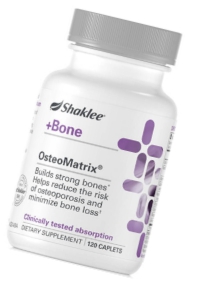
Calcium is an essential mineral for bone health, but it’s not easy to get enough. For best results, ensure that you eat a variety of calcium-rich foods each day and supplement with easy-to-absorb Chewable CalMag or OsteoMatrix.
*Steingrimsdottir L. Relationship Between Serum Parathyroid Hormone Levels, Vitamin D Sufficiency, and Calcium Intake
Bone-healthy supplements…
More good news! Shaklee offers a wealth of supplements that will keep your bones healthy for life! Start with:
____ Chewable Cal Mag Plus optimizes peak bone mass, helps maintain bone density and slows bone breakdown.
____ OsteoMatrix is clinically tested for absorption and specially formulated to provide a unique matrix of key nutrients needed to build and maintain strong bones and minimize bone loss. Provides elemental calcium, magnesium, vitamin D, vitamin K, zinc, copper, and manganese.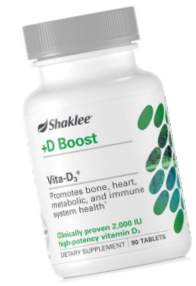
____ Vita-D3 raises the levels of vitamin D in your blood to support overall health, bone health, heart health, and immunity.
 ____ Sustained Release VitalMag is a proprietary blend of elemental magnesium from three different sources and added potassium to strengthen bones.
____ Sustained Release VitalMag is a proprietary blend of elemental magnesium from three different sources and added potassium to strengthen bones.
____ Zinc Complex supports bone metabolism.
____ OmegaGuard dampens inflammation that stimulates bone loss.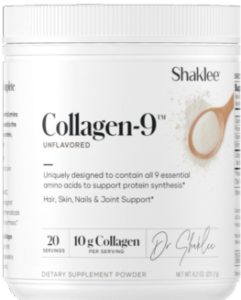
____ Collagen-9 with biotin and vitamin C supports collagen synthesis and promotes healthy hair, skin, nails, and joints.
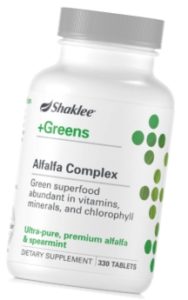 ____ Alfalfa Complex is rich in vitamins A, C, D, K, copper, manganese, folate, thiamin, riboflavin, magnesium, iron and myriad microminerals.
____ Alfalfa Complex is rich in vitamins A, C, D, K, copper, manganese, folate, thiamin, riboflavin, magnesium, iron and myriad microminerals.
Introducing… Omega-3 Gellys!
At every age and every stage, the body requires omega-3s to operate optimally. Enter another exciting new product from Shaklee… Omega-3 Gellys!
This potent formula delivers 3x more DHA + EPA to help support brain, heart, eye, joint, immune, and skin health for both children and adults.
A groundbreaking technology developed by Norwegian scientists helps the body more easily absorb the DHA + EPA in Omega-3 Gellys to support growing and developing brains, help maintain a healthy heart and cardiovascular system, help retain healthy triglyceride levels, and help support eye and joint health. A clinical study showed improved bioavailability of DHA + EPA when these nutrients were delivered using this form.
Omega-3 Gellys…
⇒⇒ help support healthy brain function.
⇒⇒ help reduce the risk of heart disease by supporting a healthy heart and cardiovascular system.
⇒⇒ help with joint comfort by promoting joint flexibility and lubrication.
⇒⇒ help support long-term eye health and help keep eyes lubricated.
⇒⇒ provide immune support and support for healthy skin.
And… it has a delightful Strawberry Lemonade flavor!
Directions
Kids: Take 1 daily with food.
Adults: Take 2 daily with food.
The importance of DHA and EPA…
EPA (eicosapentaenoic acid) and DHA (docosahexaenoic acid) are omega-3 fatty acids that are abundant in fish, such as salmon, tuna, mackerel, and some algae. They play an important role in normal human growth and development and have benefits to human nutrition and health for all ages and across the life span.
One Omega-3 Gelly contains 250 mg DHA and 50 mg EPA.

